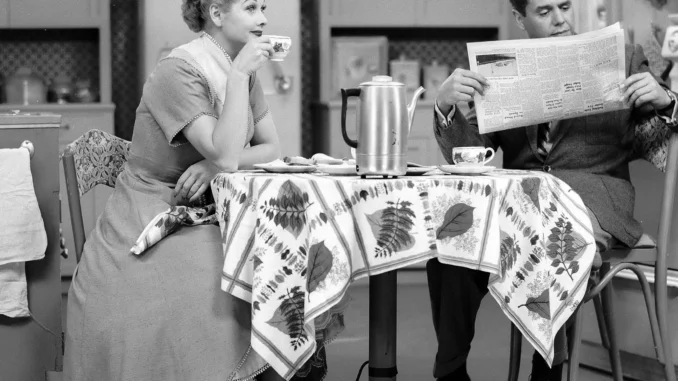
When Lucille Ball and Desi Arnaz dreamed up their new sitcom I Love Lucy, their creative imaginations led to several problems. Case in point: “I had insisted upon having a studio audience; otherwise, I knew, we’d never hit the right tempo,” Ball wrote in her autobiography Love, Lucy. That was a problem — no existing studios were large enough to accommodate a live audience. And even if there were, how could the crowd see with all the lighting, sound and film equipment in the way? To help solve those problems, Arnaz decided to turn to the guy who shot 1931’s Dracula.
“I was scarcely prepared for the many problems which were to confront me upon my initial excursion into the realm of television,” wrote Oscar-winning cinematographer Karl Freund in the December 1953 issue of Art Photography. “I expected very little variation from the ritual of photographing regular motion pictures, but I had not taken into consideration the unique problems involved. I was soon to be faced with them.”
Arnaz solved the first issue by renting an old movie studio and tearing out partitions, leaving room for bleachers that could hold up to 300 Lucy fans. It was up to Freund to tackle the rest. For example, he said, “It was decided that, for the first time, TV cameras would be replaced with three motion picture cameras.” One would shoot a master wide shot, leaving the second and third cameras to capture close-ups and reaction shots. According to Lucy, that gave editors more variety and flexibility — crucial for highlighting laughs.
The studio audience created more tech problems. Directional microphones had to be installed above the crowd so audio equipment didn’t obstruct the view. Lights also had to hang from above — the usual placement at floor level meant heavy cables that the moving cameras would have to navigate.
Finally, Freund designed a flat lighting system that’s still the standard for multi-camera sitcoms today. Less cinematic than the images in single-camera comedies, Freund’s system bathed every inch of the Ricardos’ living room in light. This technique not only eliminated shadows but allowed all three cameras to move around without changing the lighting between shots. Since I Love Lucy was filmed like a live play, continuous action was a necessity. “Retakes, a standard procedure on the Hollywood scene, are not desirable in making TV films with audience participation,” Freund noted. “Dubbed-in laughs are artificial and, consequently, used only in emergencies.”
Makes sense but the three-camera system wasn’t easy. The moving cameras created a ballet that needed to be rehearsed throughout the week to ensure smooth production on days when an audience was present. Like the actors, cameras had to hit their marks.
Freund was lauded as a pioneer for the sitcom’s luminous black-and-white cinematography, something he took great pride in. “The public acceptance of I Love Lucy,” he said, “has been a source of great inspiration for me. The challenge has been a real one — one I have found both stimulating and exciting.”
